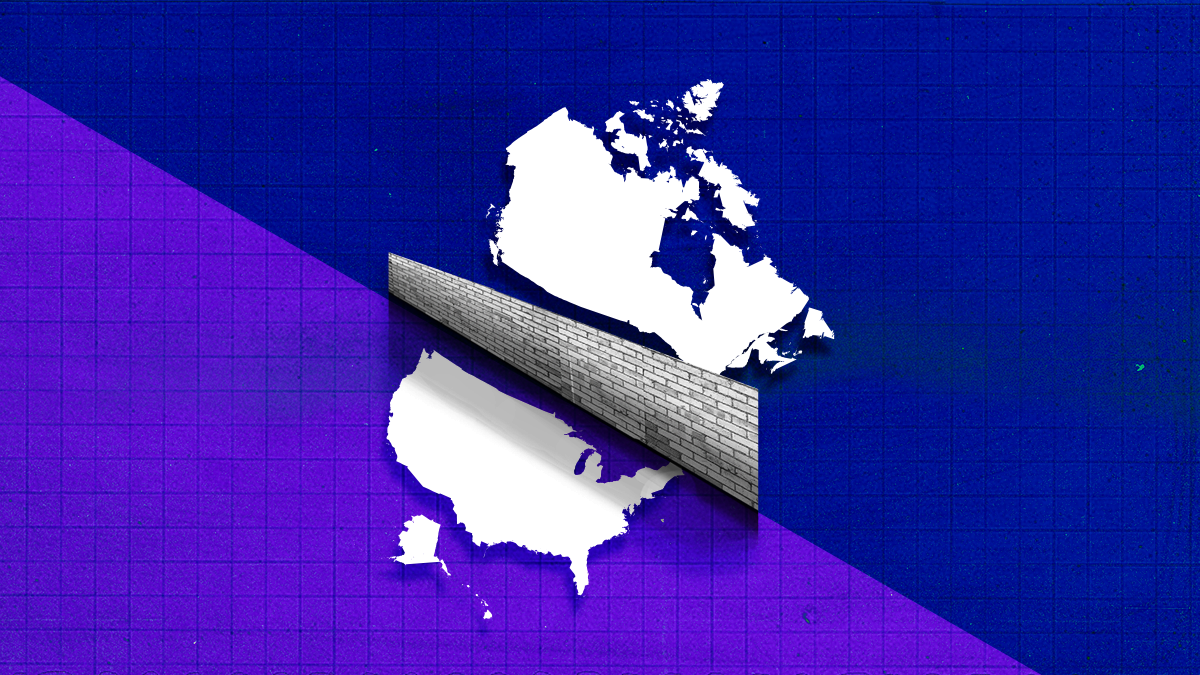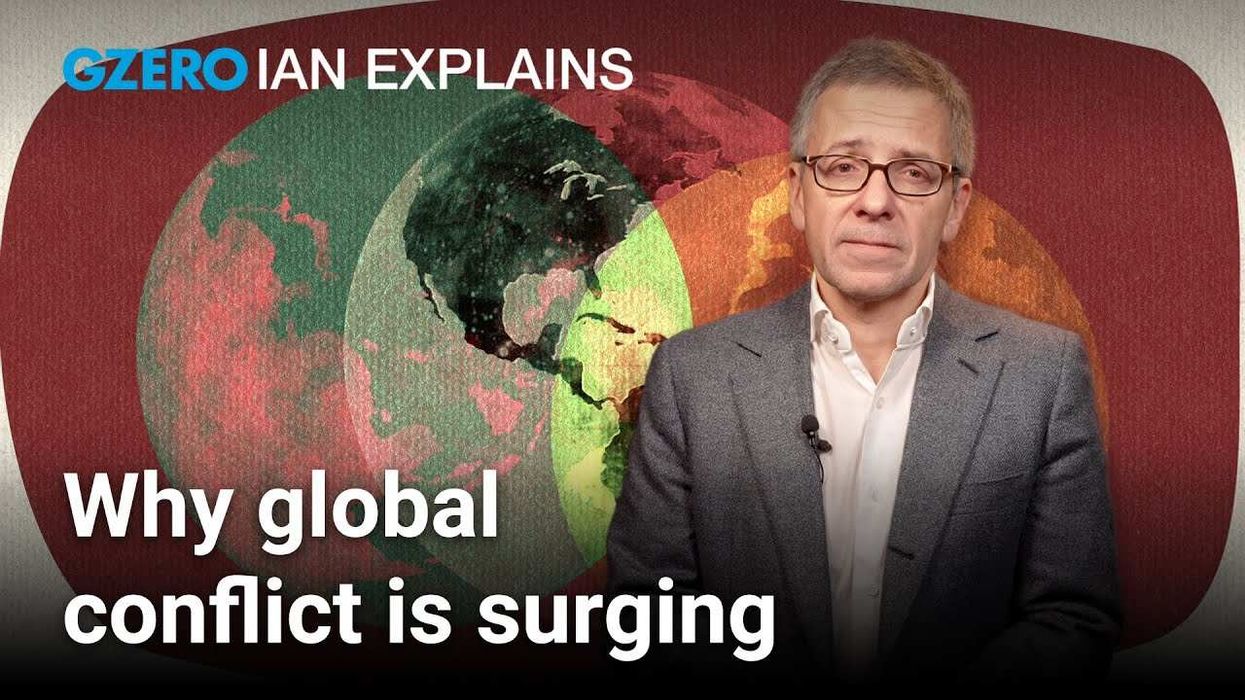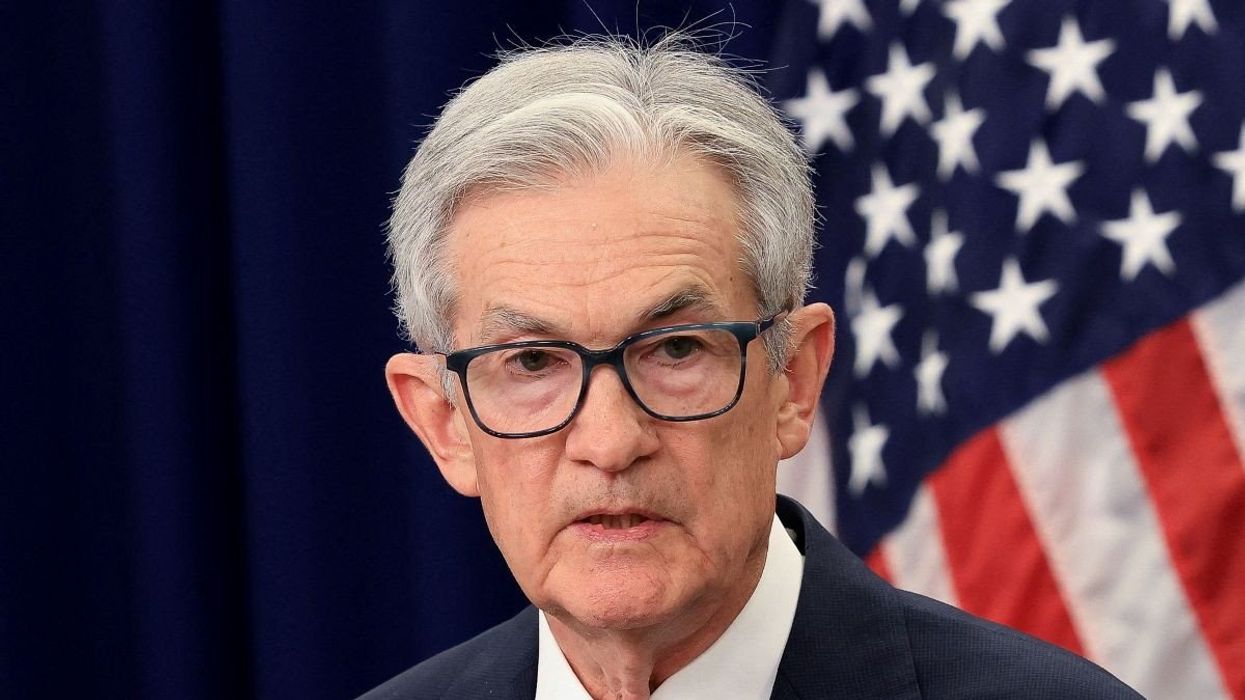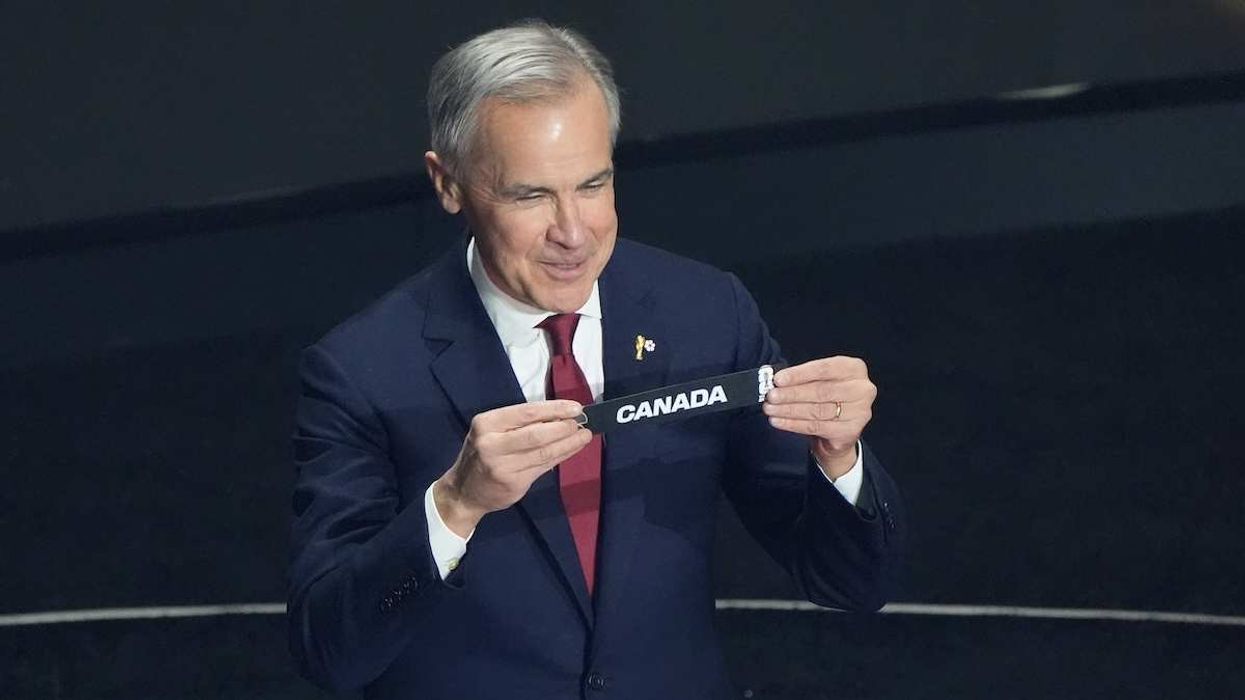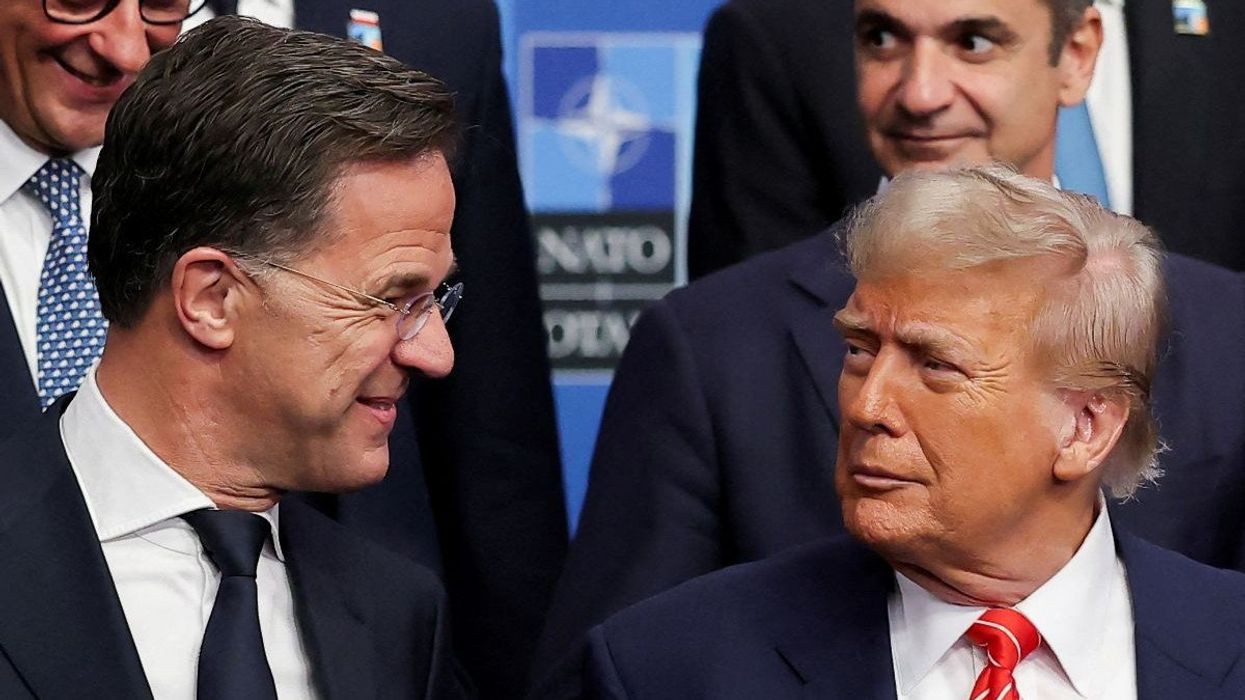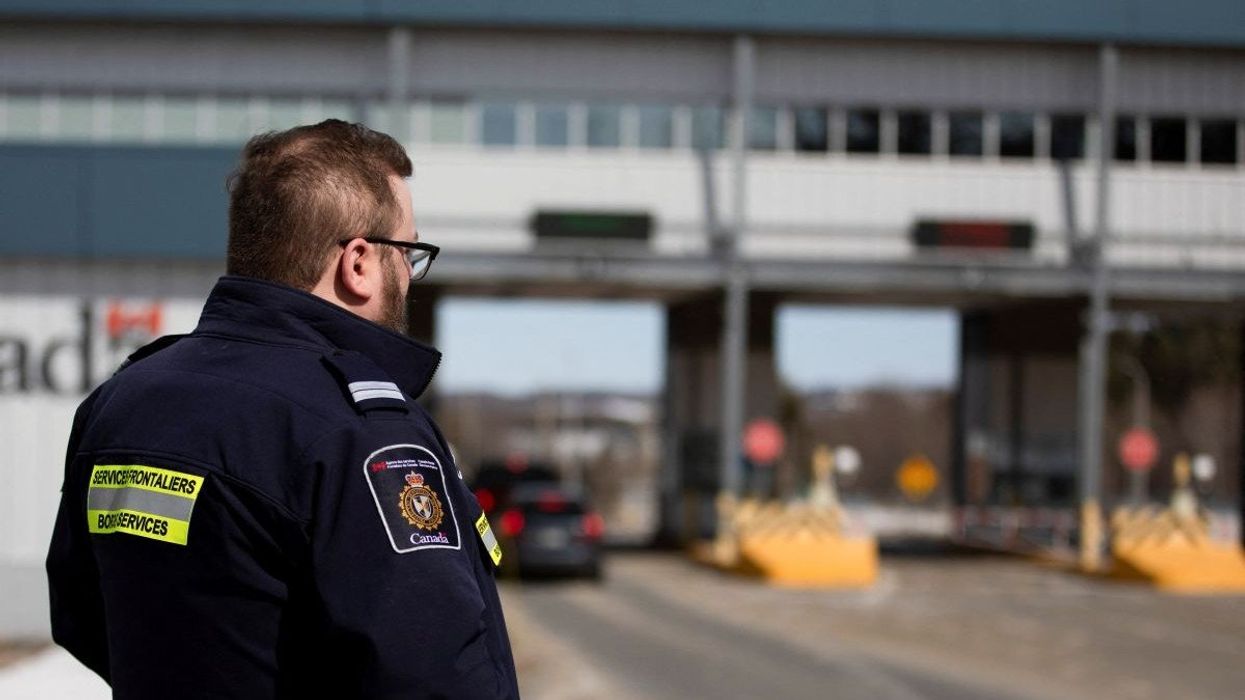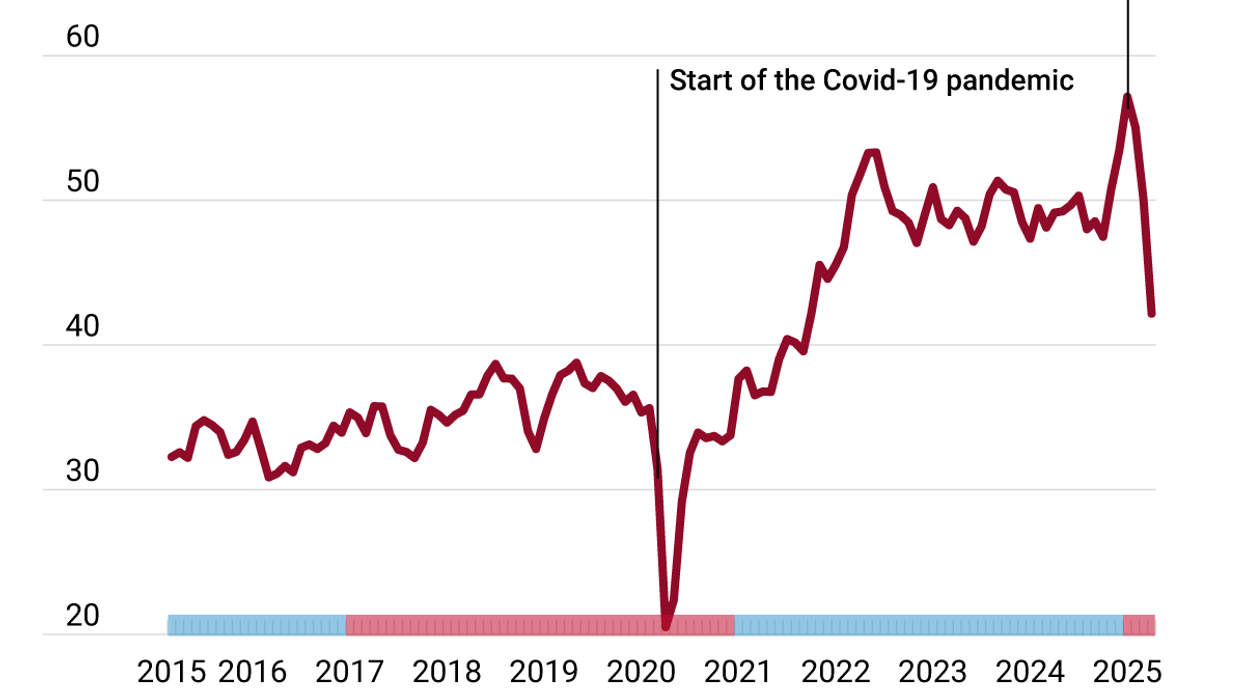No matter how cold it is in your community, it is even colder in the deep winter of discontent that has hit the 2024 political world … aka Mordor.
The year ahead presents two kinds of challenges to the US and Canada: external ones from growing conflicts and internal ones, from US isolationism and what I call “Canadian insulationism.” At the moment, it’s a toss-up which ones are more dangerous.
Let’s look at the external challenges, including the raging conflicts in Israel-Gaza, the Red Sea, and Ukraine – all of which look to worsen in 2024.
Here at Eurasia Group, one of our Top Risks of 2024 is a Partitioned Ukraine — with Russia essentially ending up with about 18% of Ukraine, something once unimaginable. But is that the end? After two years and hundreds of thousands of casualties, will 18% of Ukraine satisfy Putin’s expansionist appetite, or simply whet it for more? The second option is more likely.
Putin has converted his country into a war economy, with over 6% of his GDP going to military spending, and, despite sanctions, there is enough growth there to fuel concern about inflation.
As he sees critical US military support for Ukraine fade and a potential Trump administration on the horizon, Putin is ready to ramp up his aggression. I was at a meeting with a group of ambassadors to the UN yesterday, and many expressed a strong view that Ukraine is still just the start of Russian aggression, not the end. So it is no surprise that next week NATO will start its largest military exercise in over 20 years, with more than 90,000 troops taking part in Steadfast Defender.
This means they are getting ready for a widening war, and that is sobering.
Meanwhile, in the Middle East and North Africa, the Israel-Hamas war churns on, and efforts to contain it are looking increasingly futile. Hamas has not been sufficiently degraded to give up fighting, it still holds hostages, and it has gained wide support around the world, something the once-isolated terrorist group never enjoyed. One of the group’s greatest victories has been the “Hamasification” of the entire Palestinian cause, meaning their radical, annihilationist cause, once a marginal part of the diplomatic conversation, is now THE cause, overtaking the voice of the Palestinian Authority. And because they remain a terror group whose goal is to eradicate Israel, it makes any two-state solution or prospects of a new governance partner in Gaza extremely thorny.
Meanwhile, Israel under the extremist and embattled leader Benjamin “Bibi” Netanyahu, is gearing up for a much longer battle in Gaza — and the West Bank. He also does not want a two-state solution and never really has. Just today, in shocking remarks, Netanyahu said he does not want a Palestinian state and then said, “in the future the state of Israel has to control the from the river to the sea.” That was a provocative appropriation of a Palestinian rally cry that many Israelis regard as a call for genocide. The radical cycle is now in full spin.
Meantime, after 100 days of brutal bombings that have stunned even Israel’s closest allies, there is no real end in sight. The sophisticated tunnel systems that are discovered daily reveal the resilience of the Hamas military operation, and it is yet another aspect of the situation Bibi badly underestimated and miscalculated.
With the current Israeli and Hamas leadership, there is very little hope for anything but more war.
While most post-Oct. 7 efforts of containment centered on Iranian-backed Hezbollah in Southern Lebanon and the Palestinian Authority in the West Bank, a surprise player emerged: the Houthis. The Shiite militant group in Yemen, which fought a decade-long war against Sunni Saudi-backed forces, is launching ballistic missiles into the Red Sea near the critical Bab el-Mandeb Strait, aka Gate of Tears, which is living up to its name.
The Strait and the Suez Canal account for about 12% of total global trade, so naturally the US and a coalition of 20 countries steamed into the area to protect this critical supply line. This has a long precedent. In 1801, Thomas Jefferson sent the US Navy to fight the so-called Barbary Pirates in North Africa to protect US shipping. Today, the corsairs are Iranian-supplied ballistic missiles, but not much else has changed.
In any case, it has done no good. The Houthis flipped the Ballistic Bird at the US and launched over 30 missile attacks, driving much of the shipping business out of the Red Sea and having an immediate impact on the global economy.
The US and the UK, with the support of countries like Canada, counterattacked with a series of intensive bombing missions targeting Houthi military installations, and once again … nothing changed. This is the Houthi Trap. Red Sea shipping is a Red Line for the global economy, so as long as the Houthi attacks continue and shipping insurance rates go up, the US and its allies will have to respond. Maritime choke points like the Bab el-Mandep, the Strait of Hormuz, the Straits of Malacca, or the Panama Canal (which is too dry right now for some ships to use) – are the Achilles heels of the global economy. When any one of them is under threat, it means one thing: expanded conflict.
The internal threats in the US and Canada, however, make dealing with the external ones significantly harder. The US Republican Party is in the grip of a deep isolationism. Speaker of the House Mike Johnson told President Joe Biden yesterday that there will be no deal for tens of billions of dollars in aid to Ukraine unless he cracks down on the US border. Johnson’s job is on the line, and he knows that if he approves aid to Ukraine, far-right members of his party will make a motion to vacate and dump him, just as they did with the last speaker. And with Donald Trump in full ascension as the likely Republican nominee, US aid to Ukraine is likely coming to an end. America First means America Gone in many parts of the world, and that’s not a good sign when there are expanding wars everywhere.
Canada doesn’t have an isolationist problem. It has a long history of global involvement and is committed to multilateral originations. The problem it suffers from is an insulationist strain. It simply won’t put its money where its multilaterals are.
For example, Canada spends about 1.3% of its GDP on defense – a far cry from the 2% NATO guideline – and there has been deep concern about another CA$1 billion cut from the force this year.
Proximity to the US and being protected by three oceans have given Canadians a sense of insulation from a dangerous world, so there is no political urgency to keep up national defense. You might not buy home insurance if you don’t think your home will ever collapse, but it doesn’t work that way.
As the 2024 world tips toward widening wars, the isolationism of the US and the insulationism of Canada will make things much worse.
As my Dad used to say, the cheap man pays twice. Trying to save now by shirking responsibility in places like Ukraine and getting off easy on defense spending will only make the inevitable bill twice as expensive when it comes. And the security bill is coming.
